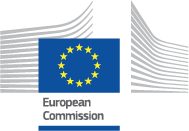VISIBILITY, COMMUNICATION AND INFORMATION
As regards European Commission humanitarian aid, visibility is sometimes used loosely to cover the whole spectrum of “visibility-information-communication”. Here below you can find a definition of the three words given in the framework of the DG ECHO funded action.
DEFINITION
Here below you can find a definition of the three words given in the framework of the DG ECHO funded action.
VISIBILITY
Visibility means in its basic acception:
• the display of the European Commission’s humanitarian visual identity,
• the written and verbal recognition of the European Commission’s role in global humanitarian aid, in partnership with the agency implementing the action, in all relevant situations.
INFORMATION
Implies the assembly of data through various tools and products that inform about humanitarian situations and actions, the partnership between the Commission and implementing agencies and the role of the EU as an aid donor.
COMMUNICATION
Relates to the pro-active dissemination of data and messages to identified target audiences. At this purpose it is important to make a distinction between operational and institutional communication.
Operational communication refers to communication activities that are part of the operational content of a project and by definition necessitate the use of information and communication tools, such as: awareness rising of the risks of unexploded ordnance; hygiene education campaigns; training brochures and workshops; radio spots to alert beneficiaries to the importance of disaster preparedness and so on.
Institutional communication refers to activities that highlight humanitarian issues and the Commission’s role more generally, to wider audiences (not just beneficiaries), such as publications explaining the Commission’s humanitarian role and the essential messages; events showing the partnership between the Commission with the agency responsible for the project; human interest films on projects being financed by the Commission and so on.
PARTNERS' VISIBILITY OBLIGATIONS
With the signature of the FPA, the Partner commits to publicise the relevance and impact of Union funded humanitarian aid, both in the European Union and in third countries where Union funded actions are carried out.
In general terms, Partners are obliged to highlight their humanitarian partnership with the European Commission. This must be done through basic visibility, communication and information activities, which implementation requires that the Partners ensure equal treatment between the Commission and (in case) other donors in their visibility and communication activities.
As concerns visibility, the Partner has the obligation to:
- display of the EU humanitarian aid field visual identity. The size and prominence of the EU visual identity will depend on the specific context (e.g. the amount and proportion of EU funding).
- give written and verbal recognition of the EU's role in global humanitarian aid, in partnership with the agency implementing the action, when referring to an EU funded project in media interviews, press releases, webpages, blogs, articles about the project, etc.
All the measures put in place in order to comply with this obligation shall comply with the Communication and Visibility Manual for European Union Humanitarian Aid published by the European Commission and available in the visibility reference documents.
As concerns the communication activities linked to the Union-funded Action (audio-visual productions, websites or pages, media contacts, journalists’ visits, paid advertising, printed publications, public events, etc.), the Partner commits to highlight its partnership with the European Union and to bring the support given by the European Union to the attention of the beneficiaries and of the general public.
Furthermore, the partners have the obligation to include the following text or a similar disclaimer on any information, communication and publications issued in relation to a Union-funded Action, in any form and medium, including the Internet:
“This document covers humanitarian aid activities implemented with the financial assistance of the European Union. The views expressed herein should not be taken, in any way, to reflect the official opinion of the European Union, and the European Commission is not responsible for any use that may be made of the information it contains.”
On the visibility section, you can find best practices on how to implement visibility and communication activities.
DEROGATION TO THE VISIBILITY OBLIGATION
As regard to the visibility in the field, a derogation will have to be requested, if one of the check boxes of the section 9.1 A is deselected or if less than four boxes of the section 9.1 B are selected. Derogation may be agreed in those contexts where the visibility activities may harm the implementation of the Action, or the safety of the staff of the Partner or its Implementing Partners, or the safety of beneficiaries or the local community. The derogation should be introduced in section 11 of the Single Form at proposal stage or, at a later stage, through a modification request. If approved, the derogation will appear in the Article 6.2 of the Specific Grant Agreement.
In any case, please remember that the derogation for visibility in the field should not stop the partner from carrying out visibility, communication or information activities at headquarters level.
MONITORING
During their monitoring visits, ECHO staff will check, among other aspects of the action, whether the partner is fulfilling its minimum obligations in terms of visibility. If ECHO staff could not find sufficient evidence, a letter will be sent to the partner to seek clarifications and to request that more efforts are put to publicise the funding.
REPORTING
At the end of the action, within the Final Report, the partner will have to demonstrate that the contractual visibility and communication obligation has been respected as an integrated part of the action and throughout the implementation process.
BREACHES OF THE VISIBILITY OBLIGATIONS
If the Partner breaches any of the foreseen obligations, the Commission may:
-
reduce the grant;
-
impose a financial penalty on the Partner, equal to 2% of the Union’s contribution;
-
both reduce the grant and impose a financial penalty;
-
suspend of payments, terminate the Specific Grant Agreement and apply administrative penalties in accordance with Article 28 of the General Conditions.
VISIBILITY'S INFORMATION AND COSTS
REFERENCE, DOCUMENTS & USEFUL LINKS
GENERAL CONDITIONS, ARTICLE 7
EN
FR
FPA GUIDELINES, SECTION, 9.7.1
EN
FR






